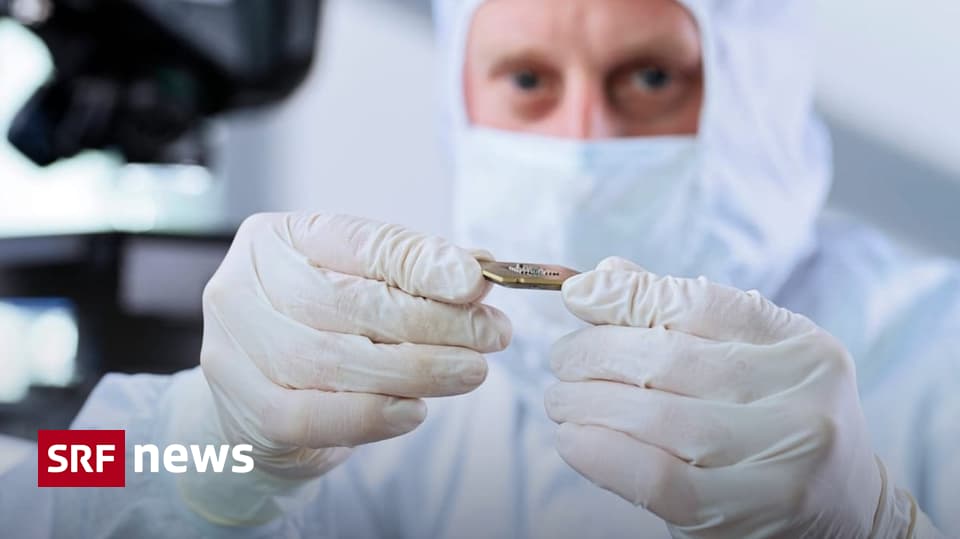Brain chips are now more common than expected: pacemakers are being implanted in patients with epilepsy and Parkinson’s disease. Now tech companies are planning a chip for healthy people. This may make our lives more enjoyable, but it may also pose a data protection risk. Gwendolyn Schoenfeld, science editor at SRF, assesses how realistic a future with a brain chip for everyone is.
What are the benefits of a chip in the brain?
Technology enthusiasts dream of using a brain chip to control technical devices using their brains: driving a car without a steering wheel or making phone calls without plugging a mobile phone into their ear. The future brain chip could also control devices unconsciously. When it detects we are frozen, it automatically turns on the heating. Two people’s chips can also communicate with each other. It would be possible to make brain-to-brain telephone communications, or our colleague could broadcast his vacation directly into our heads. But that is the distant future. It is likely that we will use brain chips to improve our sleep or to be able to focus for longer.

legend:
It can also be performed non-surgically: However, non-surgical brain slices using hair bands are less accurate. Used by Liverpool FC’s Trent Alexander-Arnold in training (May 25, 2022).
Images by imago/Shutterstock/Paul Greenwood
How does a brain chip work?
The brain chip allows information to be exchanged between the brain and electronics because they both use electrical impulses. A computer chip is inserted directly into the brain during the procedure. There are electrodes on the chip that connect to neurons. This is how the brain’s electronic signals are measured. The chip translates it into machine language using artificial intelligence and sends the translation from the head via wireless transmission. Theoretically, information exchange is also possible in the opposite direction: in the future, the chip could transmit information from the outside world to the brain.
Can a brain chip read my thoughts?
Yes, but he’s not very good at it. Brain chips must first learn to interpret our thoughts. In one study, researchers measured the brain activity of sleeping people. They could read from the data that the person dreamed of an apple, for example, but they couldn’t figure out what happened to it. In theory, the chip could also be used from the outside to manipulate us: one could cause unwanted movements. For example, forming a fist creates a fairly simple signal in the brain that can be easily imitated by a computer chip. Some emotions such as joy or fear can also be elicited by a brain chip.
Will we all have a brain chip in the future?
It is estimated that within 20 years, many people – but not all – will regularly measure their brain activity with a microchip. We’ll probably use headband-style wearable brain chips to track our concentration levels or moods throughout the day. At night we control and improve our sleep. Thus, brain chips will become a lifestyle product, much like today’s smartwatches. In the future, implanted brain chips will only be used in medicine. ‘Deep brain stimulation’ involves sending electrical signals to the brains of Parkinson’s patients to help them walk better. In patients with epilepsy, a brain chip monitors brain activity and protects against an impending seizure.

“Typical entrepreneur. Lifelong beer expert. Hipster-friendly internet buff. Analyst. Social media enthusiast.”







More Stories
Treasure from a Baltic Shipwreck: Champagne and Mineral Water Discovered – News
US Election Year 2024 – Trump Celebrated as Pop Star at Party Conventions – News
Donald Trump’s photo after assassination attempt: What does it mean? – News